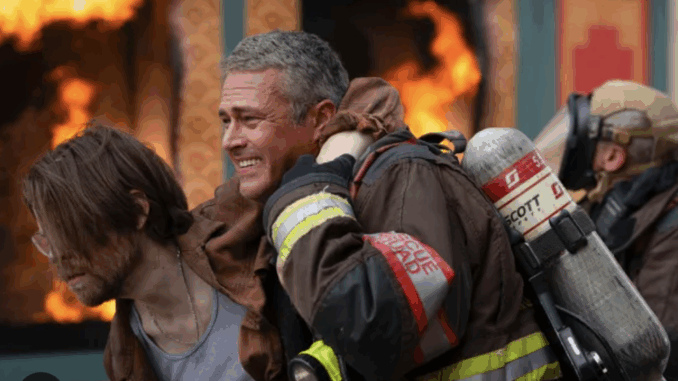
Chicago Fire delivers heart-pounding action and emotional stories, but how much of what we see on screen reflects the actual experiences of firefighters? Let’s break down the realism, from handling emergencies to team dynamics:
🔥 The Intensity of the Calls:
- On Screen: The show often depicts high-stakes, dramatic, and frequent emergency calls.
- In Reality: While firefighters do face intense situations, the frequency and consecutive nature of major incidents shown in the series might be heightened for dramatic effect. Real-life firehouses also handle a wider range of calls, including medical emergencies and public assistance.

💥 Handling Fires and Explosions:
- On Screen: Severide and his team often navigate complex and rapidly escalating fire situations, sometimes involving significant explosions. Their technical skills are frequently highlighted.
- In Reality: The core techniques and strategies shown for firefighting are generally based on real protocols. However, the timing and scale of explosions and fire spread might be amplified for television. Real firefighters rely heavily on meticulous risk assessment and adherence to strict safety procedures.
🚑 The Paramedic Role:
- On Screen: Paramedics like Sylvie Brett are shown providing critical on-scene medical care and working closely with the firefighters.
- In Reality: The integration of paramedics within fire departments is accurate. The medical procedures and the urgency depicted are generally reflective of real emergency medical services.
🤝 Team Coordination and Dynamics:
- On Screen: The strong camaraderie, loyalty, and occasional interpersonal conflicts within Firehouse 51 are central to the show.
- In Reality: Teamwork and strong bonds are crucial for firefighters. The intense and dangerous nature of their work fosters close relationships. While some dramatic license is taken, the core dynamic of a tight-knit firehouse family resonates with real-life accounts.
⚙️ Equipment and Technology:
- On Screen: The show features realistic-looking gear, trucks, and tools.
- In Reality: The equipment depicted is generally accurate and reflects the tools used by modern fire departments.
⏳ Time Constraints and Decision-Making:
- On Screen: Decisions often need to be made rapidly under extreme pressure.
- In Reality: Firefighters operate under immense time constraints and rely on extensive training and protocols to make quick, life-saving decisions. The show captures this sense of urgency well.
🗣️ Insights from the Field:
(If possible, include a quote from a real firefighter or cite a news article here. For example:)
“While Chicago Fire is exciting to watch, the reality is often more methodical and relies heavily on teamwork and following established procedures,” says Captain [Name] of [Fire Department]. “The emotional bonds between firefighters and the dedication to helping others, however, are very real.”
🎯 The Verdict:
Chicago Fire, while grounded in the realities of firefighting and emergency response, does take some dramatic liberties to create compelling television. The core elements of the job – the danger, the teamwork, and the dedication – are portrayed with a significant degree of accuracy, even if the frequency and intensity of major incidents are heightened for entertainment. It offers viewers a glimpse into the heroic world of firefighters, even if it’s through a slightly amplified lens.
